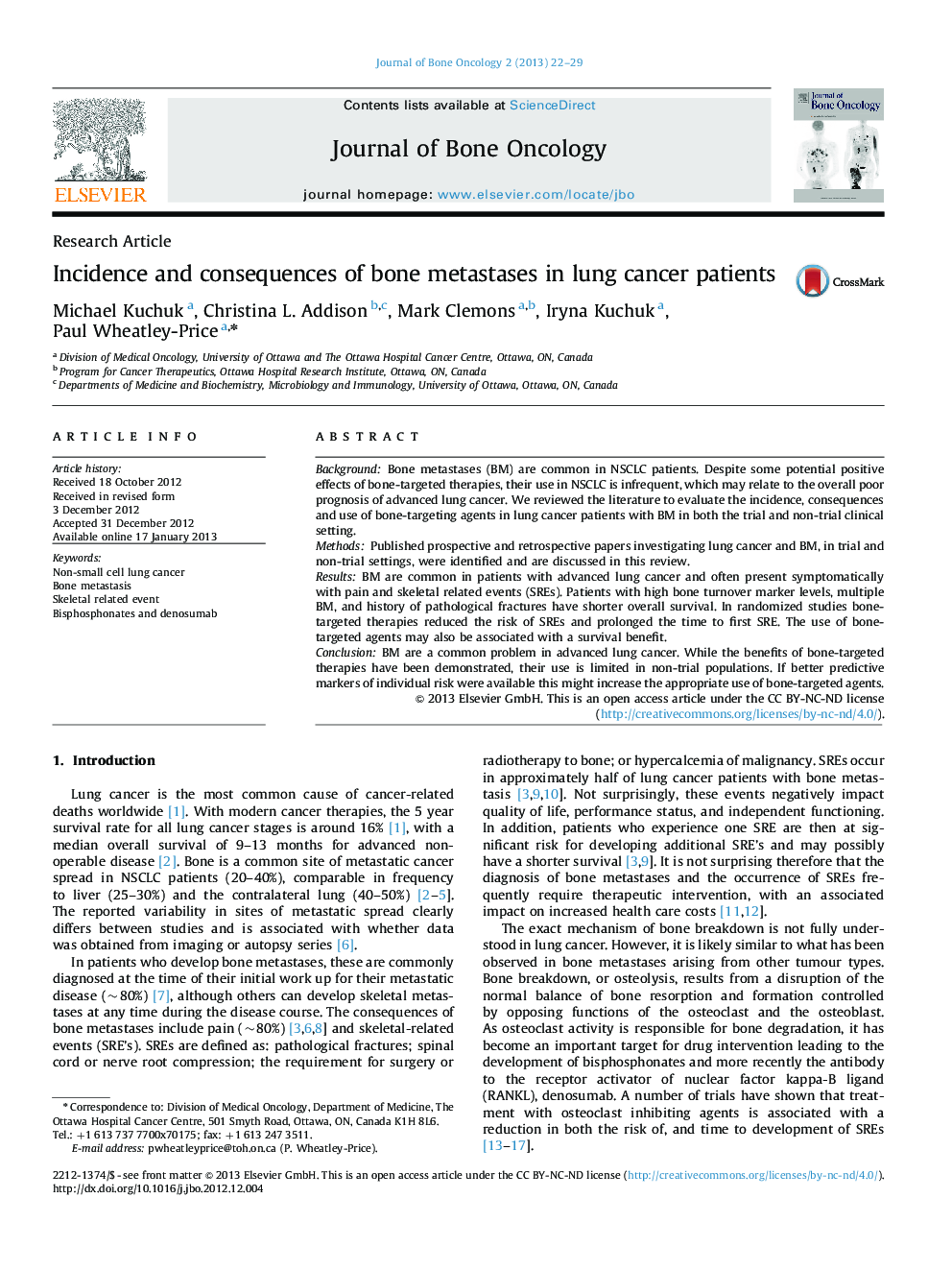| Article ID | Journal | Published Year | Pages | File Type |
|---|---|---|---|---|
| 2136191 | Journal of Bone Oncology | 2013 | 8 Pages |
BackgroundBone metastases (BM) are common in NSCLC patients. Despite some potential positive effects of bone-targeted therapies, their use in NSCLC is infrequent, which may relate to the overall poor prognosis of advanced lung cancer. We reviewed the literature to evaluate the incidence, consequences and use of bone-targeting agents in lung cancer patients with BM in both the trial and non-trial clinical setting.MethodsPublished prospective and retrospective papers investigating lung cancer and BM, in trial and non-trial settings, were identified and are discussed in this review.ResultsBM are common in patients with advanced lung cancer and often present symptomatically with pain and skeletal related events (SREs). Patients with high bone turnover marker levels, multiple BM, and history of pathological fractures have shorter overall survival. In randomized studies bone-targeted therapies reduced the risk of SREs and prolonged the time to first SRE. The use of bone-targeted agents may also be associated with a survival benefit.ConclusionBM are a common problem in advanced lung cancer. While the benefits of bone-targeted therapies have been demonstrated, their use is limited in non-trial populations. If better predictive markers of individual risk were available this might increase the appropriate use of bone-targeted agents.
